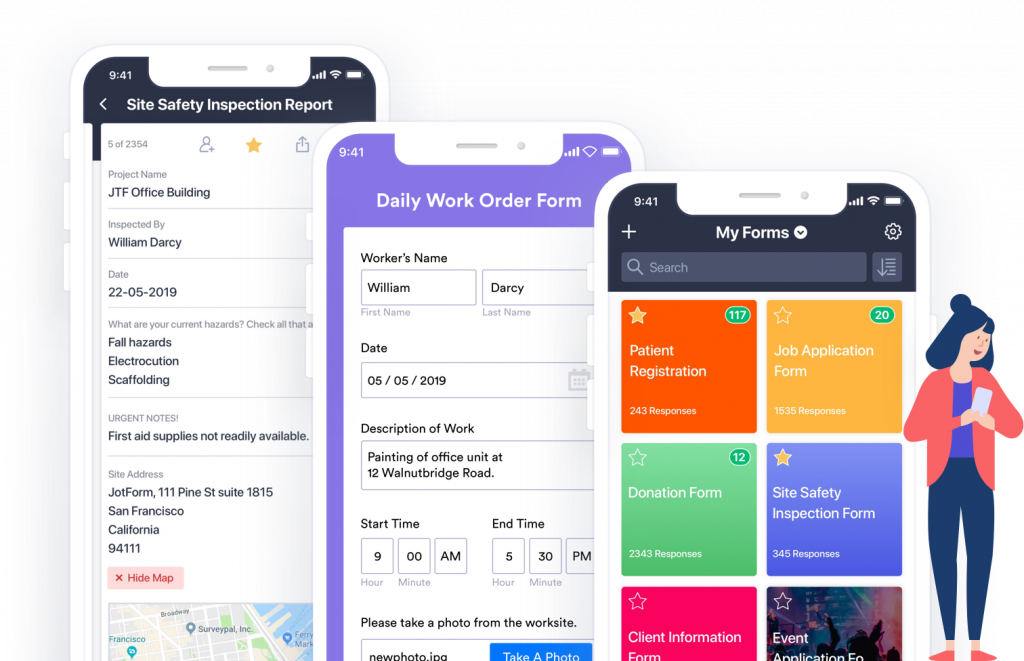There was a time when building online forms required coding expertise and wasn’t scalable at all. However, thanks to products like JotForm, which allowed anyone without even the technical know-how, creating forms became extremely easy. The San Francisco-based company has been the pioneer in the form-building software category and has been used by millions of users worldwide. To understand the company’s evolution over the years, how it has an edge over its rivals, and more, we got in touch with JotForm’s Vice President of Marketing and Communications, Chad Reid.
PS: the interview has been edited for the sake of brevity.

Table of Contents
1) Before we begin talking about JotForm, we’d love to know your journey into the world of SaaS.
Interestingly, Mr Reid replied that “JotForm is the first SaaS company I’ve worked at, but I’ve been here for five and a half years so far, and it’s been quite a journey.”
“To be honest JotForm feels like a different company now than it did when I first joined. We’ve more than quadrupled our subscribers and employee headcount since I started in 2014,” he added.
2) Can you walk us through JotForm’s evolution since its inception in 2006?
He answered that “our founder started JotForm while he was working full-time as a developer at another company. He didn’t like building forms himself and figured there must be a better way to do it. And, at that time, there wasn’t. So, assumptions were made in the early days that he was making a product that served developers, since they were the ones traditionally tasked with creating forms.”

Adding further, he stated that “the real evolution is the fact that JotForm isn’t really aimed at developers at all, but rather anyone who wants to create a powerful information collection tool, whether they’re a marketing manager or an admissions counselor at a school. And the product itself has undergone some substantial changes since 2006. Our focus for years was really on the form building experience. But recently we’ve added a lot of value in terms of what a user can do with the submissions they receive, as well as big improvements in the UX experience for the people who fill out forms.”
3) What kind of people / industries are the biggest users for you?
Mr Chad Reid told that “it’s easier for us to think in terms of use cases than industries. We know our users love creating registration forms, application forms, feedback forms, and payment forms. But the industries themselves are really all over the board, which isn’t a huge surprise. Really any organization needs some means of collecting and managing information, so we’re valuable to a wide array of users. We do tend to see a lot of users in non-profits, healthcare organizations, schools, and small businesses. And our Enterprise version is a big hit with larger companies.”
4) Could you share the split between JotForm’s free users and customers who’ve subscribed to paid plans?
As with any freemium service, JotForm is quite popular, so we were quite keen to understand the paid userbase of the software. To this, he shared that “the lion’s share of JotForm users are still on free plans, which is fine by us. The breakdown is about 80/20 free to paid.”
5) When it comes to creating forms, there are a lot of companies out there – both established companies as well as other startups. So how does JotForm stand out amid competition?
Elaborating on this, Mr Reid mentioned that “JotForm is so product-focused that there will never be a company that matches what we have in terms of features. Consider what you get with JotForm: an incredibly useful mobile forms app, HIPAA compliance, more than 80 direct integrations, payment processing, the best form design customization, and PDF document creation. And when you factor in our price, it’s a tremendous value given all the functionality.”

“The more established companies in the form business have an enormous advantage over newer companies. We have years and years’ worth of product improvements, advanced features, and integrations. The effort and resources required to catch up to that is almost insurmountable, even for larger SaaS companies that decide to offer forms,” he added further.
6) Can you shed some light on your marketing strategy and how are you reaching out to potential customers?
Revealing an interesting strategy, he shared “we certainly do our best to diversify our marketing channels. We take content marketing seriously, and have a team full of great writers and editors who make that happen. So 2020 has really been about adding great content to our blog, and revamping underperforming content on our template gallery. Additionally, while JotForm isn’t really designed for any one industry, we tend to market seasonally to certain high-value sectors. One month we’ll focus on non-profits, for instance. And when we do that, we’ll focus on non-profit trade publications in our PR efforts, advertising opportunities, internal content, as well as our newsletter.”
7) We’re living in challenging times. So how’s JotForm adapting to the same?
“The biggest change for us was the launch of our Coronavirus Responder Program, which is our way of offering free, unlimited, HIPAA-compliant JotForm accounts to medical professionals or anyone on the front lines fighting the virus. Unlike many businesses, we saw an explosion of new users at the onset of the epidemic, and we knew we needed to do something to make our service more accessible to those who are serving the greater good during this time,” Mr Reid mentioned.
Related read: COVID-19: The Ultimate List of Free Software and Resources
8) What kind of growth you’ve witnessed in your usage during this time since JotForm is available for free for healthcare workers?
He divulged that “the Coronavirus Responder Program has been extremely popular. We’ve had several thousand organizations accepted into the program who are now getting JotForm for free. It’s also given us many more healthcare users than we had previously.”
9) What does the future look like for JotForm? Could you share any new features that users should look out for?
While he didn’t want to share specific info, he did share that “the new features down the road for JotForm are really focused on what a user can do with the data they can collect in their forms. It’s going to make collected data more presentable, shareable, and readable. Some of what we have coming up later this year is the result of several years of development, and we’re absolutely thrilled with it. It’ll be hard to call JotForm just a “form company” after it’s all said and done.”

10) What are your favorite SaaS products out there, apart from JotForm?
Mr Chad Reild told us that “I’m a huge fan of both Asana and Trello. I know I should just pick one, but I can’t. I use both for different projects and with diverse groups within the company. Managing projects like that is such a productivity boost. And I have to say, in a COVID-19 world, it’s terrific having these tools to collaborate with colleagues remotely as well.”






